Van Gogh Dreams
Van Gogh Museum Amsterdam
Van Gogh Dreams is an immersive narrative installation about Vincent van Gogh's emotional journey during the year he spent in Arles (1888-1889)—a period that defined him both as an artist and as a man. Tellart crafted the experience from concept to installation, in close collaboration with the museum's curators and leadership team. This is the first time the museum presents the artist in a visitor experience without using paintings.
The story is told through five distinct multisensory environments that capture contrasting emotions, inviting visitors to empathise with the man behind the paintings.
Chapters
Leaving Paris
“I left Paris very, very upset, quite ill and almost an alcoholic through overdoing it.”
(Letter 695 to Paul Gauguin)
In early 1888 Van Gogh escapes the deadening Parisian winter in search of the light and colour of the South.
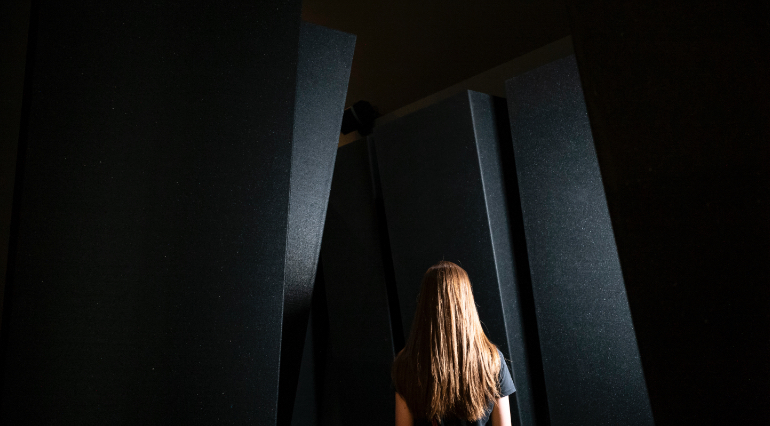
Visitors enter a dark and confined passage with clattering city sounds, expressing the depression and malaise Van Gogh experiences in Paris during the winter of 1887 - 1888.

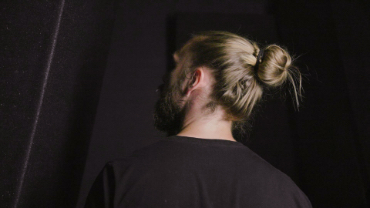
Subtle floor lighting guides visitors through the darkness.

The Promise of the South
“Patches of flowers take on an amazing brilliance, and in the limpid air there’s something happier and more suggestive of love than in the north.”
(Letter 657 to Theo van Gogh)
Thrilled by his new surroundings, Van Gogh works tirelessly towards his dream of creating a studio dedicated to the art of the future.


Rounding the corner, visitors emerge into a luminous, summery space with 900 handmade glass sunflowers. The room conveys the inspiration, hope and creative euphoria of the first period in Arles.



Living with Gauguin
“Gauguin and I talk a lot… The discussion is excessively electric. We sometimes emerge from it with tired minds.”
(Letter 726 to Theo van Gogh)
In autumn Vincent welcomes his artist-friend Gauguin to the Yellow House, living and working with him for two intense months.

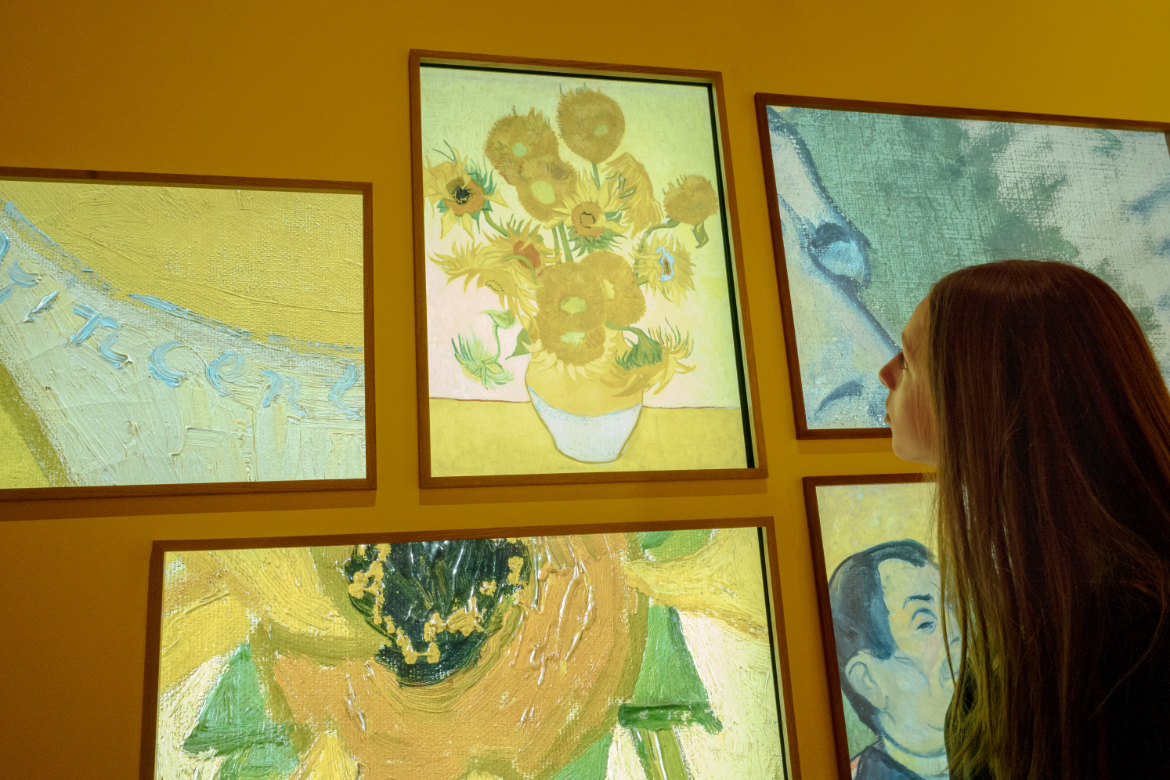
Visitors then enter a simple room that captures the daily conviviality and animated exchanges between Van Gogh and Gauguin while sharing the Yellow House. Just outside, the two men erupt into verbal clashes.

The Dream Falls Apart
“I hope that I’ve just had a simple artist’s bout of craziness.”
(Letter 732 to Theo van Gogh)
When tensions rise surrounding Gauguin's departure, Van Gogh suffers a mental breakdown during which he cuts off his ear. He is faced with the crushing reality of his illness.
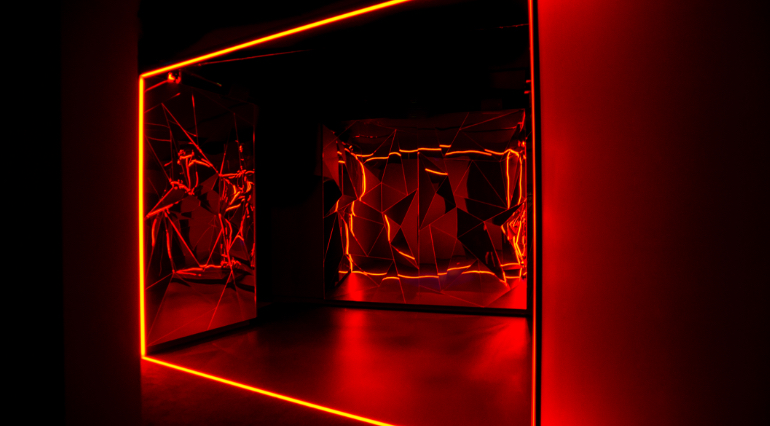
Visitors enter a room that captures Van Gogh's inner turmoil as his dream abruptly ends.
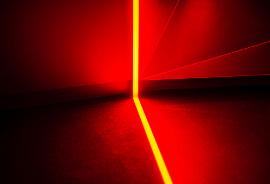

Visitors enter a room that captures Van Gogh's inner turmoil as his dream abruptly ends.

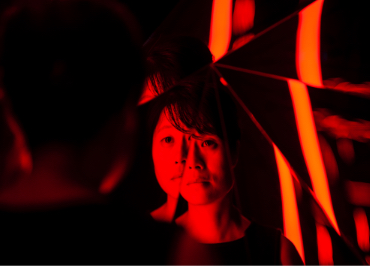
Striving for Greater Meaning
“In a painting I’d like to say something consoling, like a piece of music… To express hope through some star. And still to feel the stars and the infinite, clearly, up there. Then life is almost magical, after all.”
(Letters 673 and 663 to Theo van Gogh)
Despite everything, Van Gogh finds comfort in painting, in nature'’s beauty and the promise of infinity.


Visitors emerge into a meditative room with a moiré pattern of shifting lights that reference Van Gogh's brushstrokes and night skies. The serenity of this final space captures the concluding chapter of Van Gogh's life, during which he was sustained by nature and painting, and his lifelong belief in a reality greater than himself.

Process
Working closely with the museum’s curators and educators, Tellart conducted rigorous research on Van Gogh’s works and letters. This detailed visual mapping process allowed the museum team to discover new connections between his works and personal experiences.

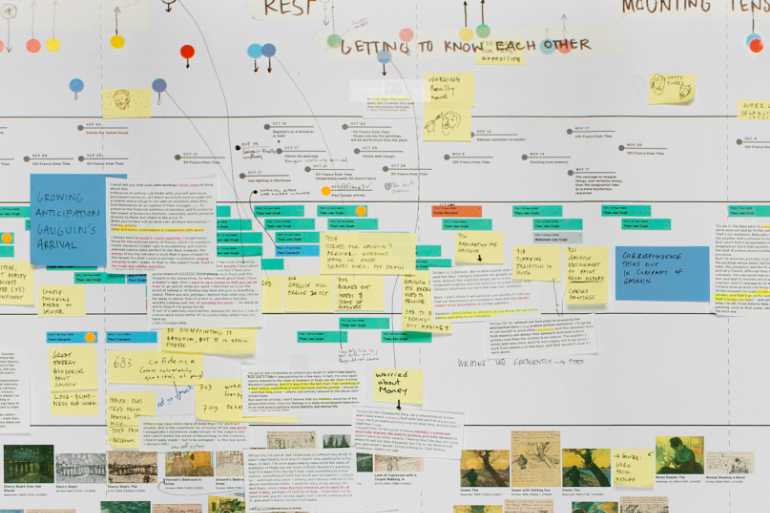

This installation is unique for Tellart in its deliberate use of minimal technology. The goal was to tell the story using simple, truthful materials as opposed to modern interactives. Technology efforts were focused on designing parametrically-generated patterns for the sunflowers and moiré wall, in order to produce organically distributed shapes.
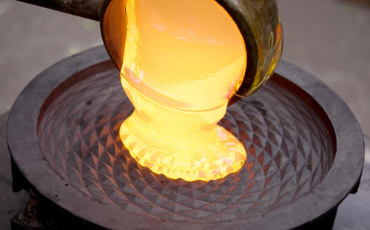


Using Tellart's parametric 3D pattern model, glass studio Van Tetterode created more than 900 unique handmade, pressed glass flowers for the installation, inspired by the world-famous Sunflowers Van Gogh painted during this period.

“By merging storytelling with aesthetics, technology and craftsmanship Van Gogh's emotional life is made tangible and accessible for a large audience.”
Axel Rüger, Director, Van Gogh Museum
“This exhibition is about the person behind the artist. First and foremost, visitors of the Van Gogh Museum come to see his paintings. Many times the artwork expresses who he was, but now we want to give visitors the opportunity to get closer to his emotions.”
Ann Blokland, Senior Curator of Education, Van Gogh Museum
“Vincent always colored in dots and stripes and did not mix. This way of painting had to do with how he felt. Depression with great fears, but also the power to continue painting, marked his life. That is what I have been able to feel in this exhibition…. I felt his grief, but could happily let it go. Vincent lives on and his works of art are appreciated by many.”
Sally, test visitor
“All my senses went on, goose bumps all over.”
Eva, visitor
Project Data
Highlights:
• The Van Gogh Museum was the most visited museum in the Netherlands in 2017. It welcomed 2,260,000 visitors from more than 125 countries.
• Showing from July 27th until January 13th 2019
• The installation will return every summer for 2-3 months.
Selected Press:
Project team:
Tellart was responsible for research, concept and design, in collaboration with the Van Gogh Museum. The team worked closely with the following partners:
Exhibition fabrication: Fiction Factory
Glass studio: Van Tetterode
Sound design: Klevr
Lighting design: Studio Flek
Audiovisual equipment: VHS
Printing and stickering: Watjeziet
Sign up for our newletter






